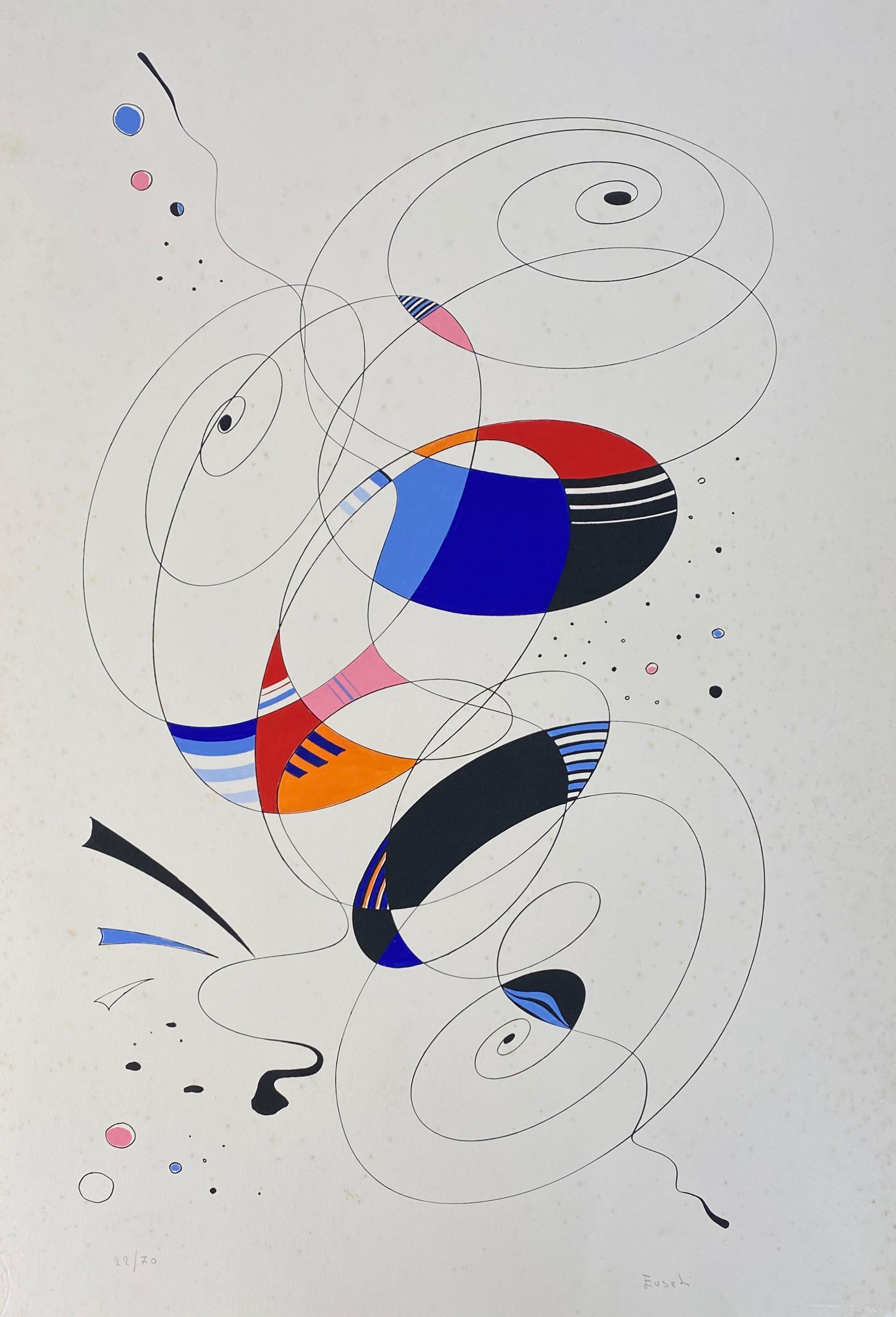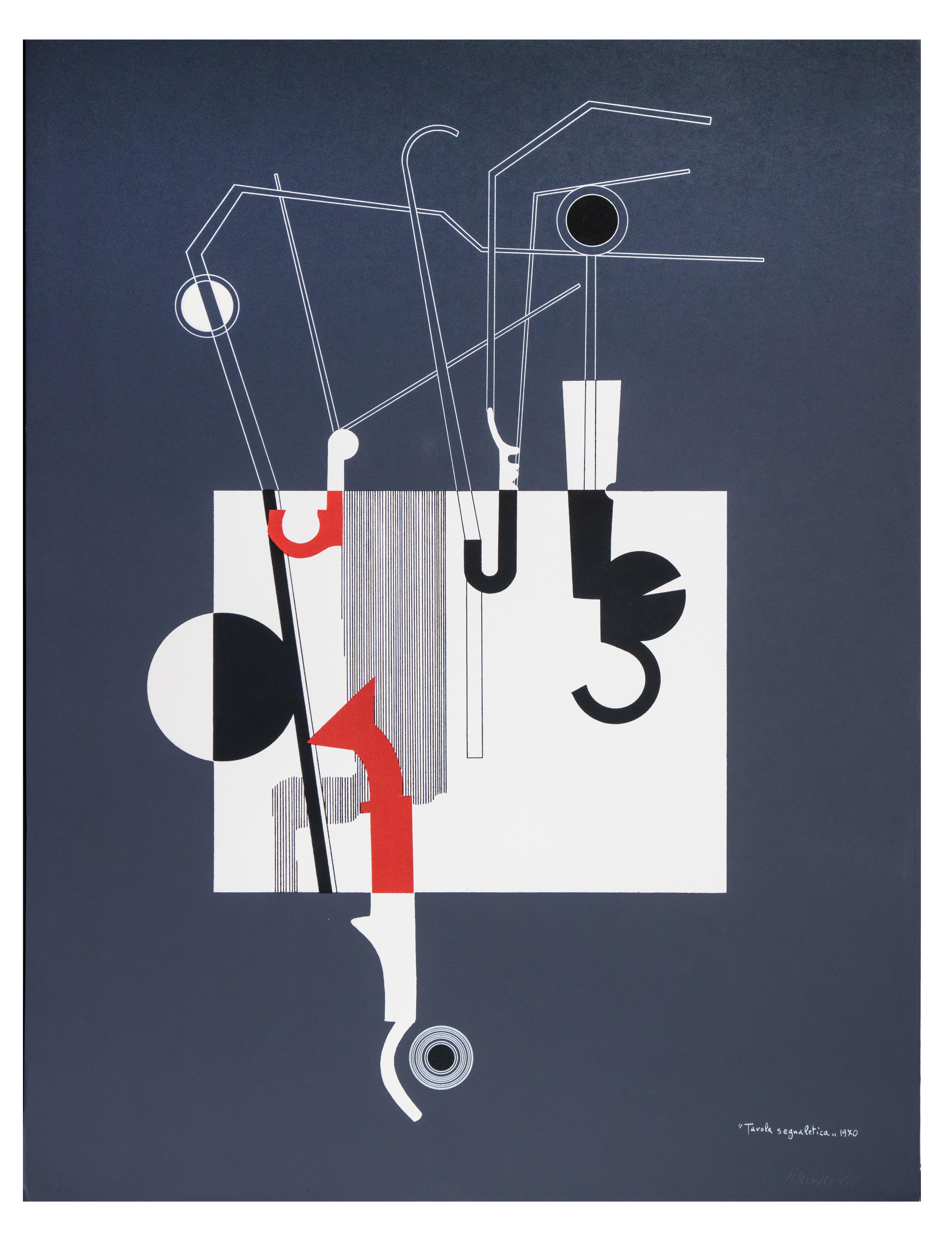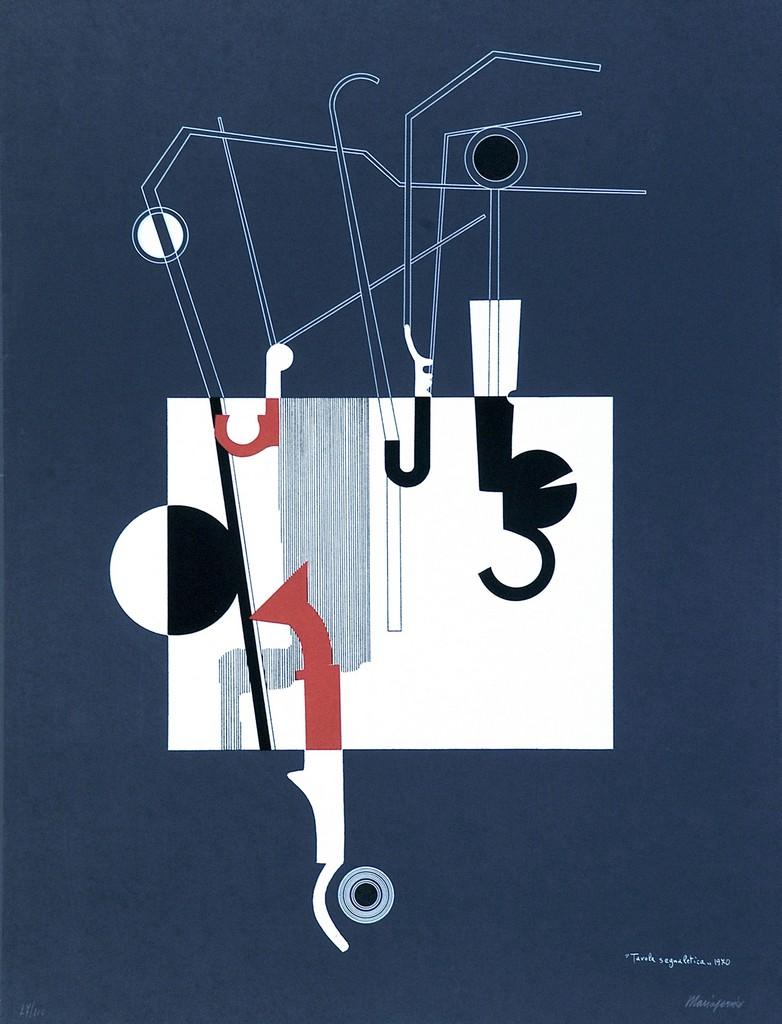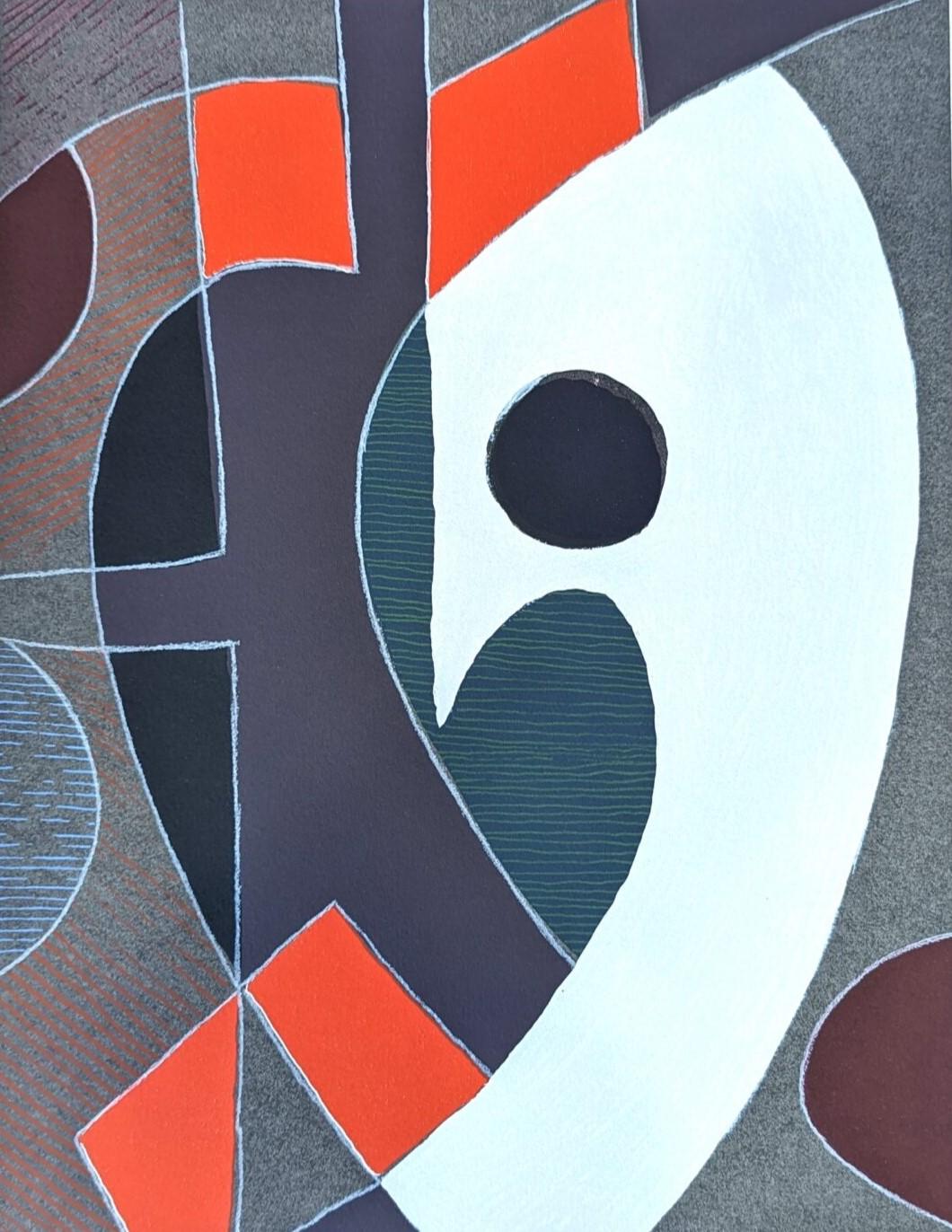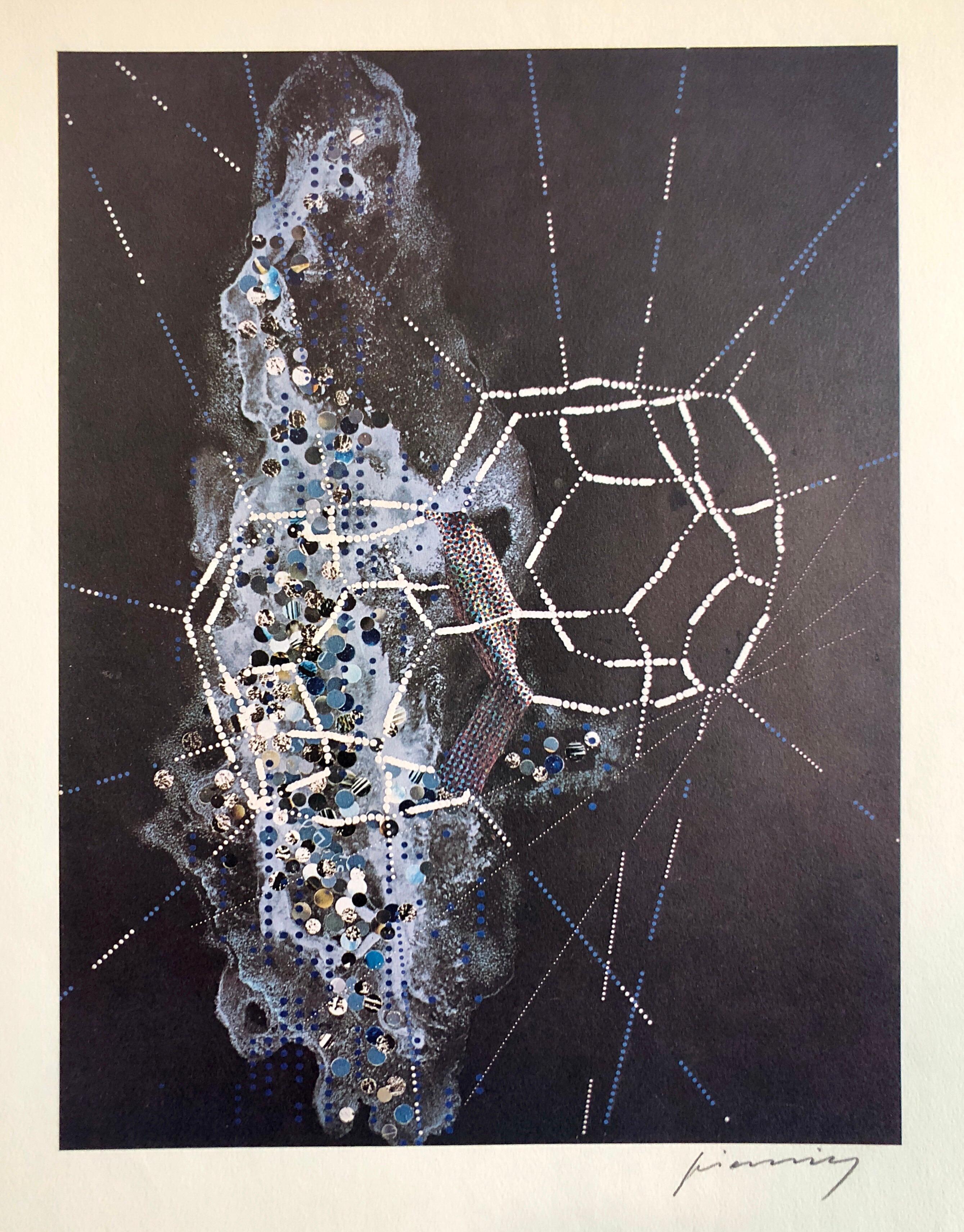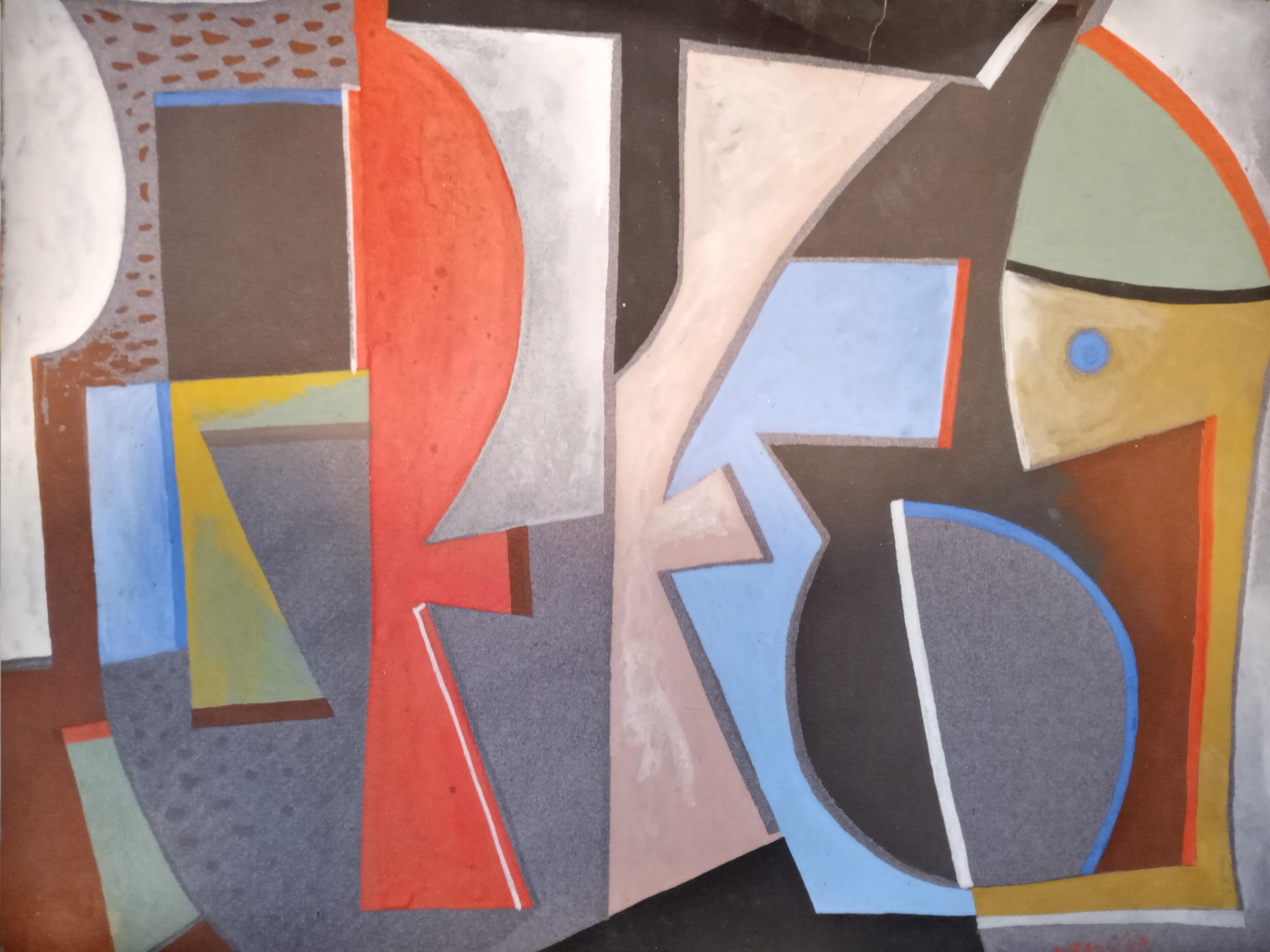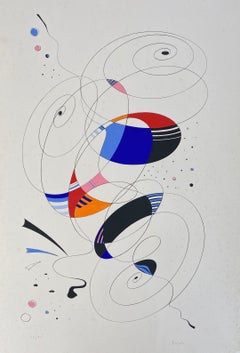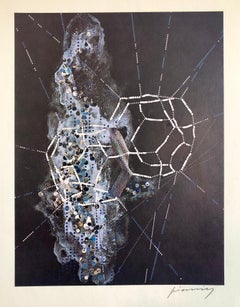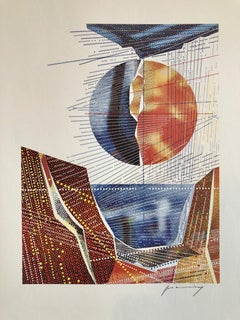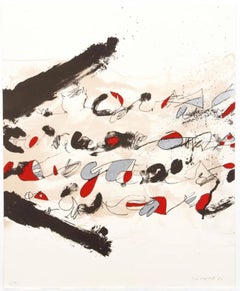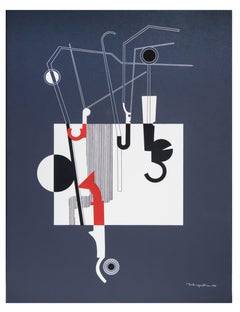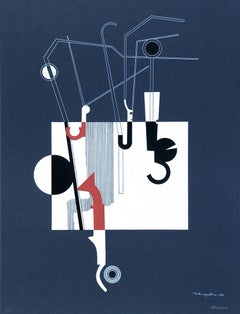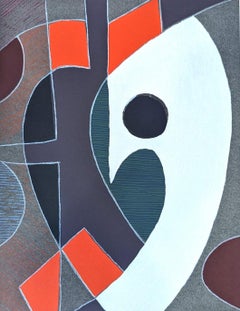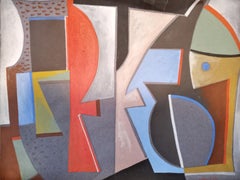Items Similar to Italian Artist Abstract Lithograph
Want more images or videos?
Request additional images or videos from the seller
1 of 13
Renzo EusebiItalian Artist Abstract Lithograph
$800
£624.86
€708.36
CA$1,146.89
A$1,258.08
CHF 658.24
MX$14,973.60
NOK 8,314.03
SEK 7,798.71
DKK 5,290.41
About the Item
Renzo Eusebi, Born in Patrignone di Montalto Marche, Italy, 1946
In the 1960s he completed his artistic studies in Rome, followed the classic route and qualified for teaching which he would then engage in for the next twenty years. In the 70s and 80s, he began the search for his own artistic personality, exhibited in large international fairs, from Art Basel to New York, Chicago, Los Angeles, Tokyo, Bologna, San Francisco, Philadelphia, Atlanta, Dallas, Gant, Padua, Verona and Hangzhou, China. and intensified his presence on the national artistic scene. His early work involves cloth, fabric, textiles and even clothing, tearing on monochrome colored surfaces, made more suggestive by the accidents of clots mixed with glassy substances, with wooden sculpture and with iron sculpture. He was influenced by Alberto Burri and Lucio Fontana. In 1995, joins other artists to found "Transvisionism". Walter Cocetta, Pasquale Di Fabio, Antonio Di Girolamo, Renzo Eusebi, Pitti., G. Leto, A. Spinogatti of the GAD (Aniconismo Group Dialectic) founded by Giorgio Di Genova. In 1998 he joined the San Carlo gallery in Milan. In 2010 he was included in the "History of Italian art of the 1900s, Generation of the 1940s", written by Giorgio Di Genova and published by the Bora editions of Bologna. His later works use basic elements of form and primary colors in the manner of Piet mondrian.
- Creator:Renzo Eusebi (1946)
- Dimensions:Height: 30 in (76.2 cm)Width: 22 in (55.88 cm)
- Medium:
- Movement & Style:
- Period:
- Condition:Minor wear and small stains. Please see Photos.
- Gallery Location:Surfside, FL
- Reference Number:1stDibs: LU38215317532
About the Seller
4.9
Platinum Seller
Premium sellers with a 4.7+ rating and 24-hour response times
Established in 1995
1stDibs seller since 2014
1,836 sales on 1stDibs
Typical response time: 1 hour
- ShippingRetrieving quote...Shipping from: Surfside, FL
- Return Policy
More From This Seller
View AllItalian Artist Abstract Lithograph
By Renzo Eusebi
Located in Surfside, FL
Renzo Eusebi, Born in Patrignone di Montalto Marche, Italy, 1946
In the 1960s he completed his artistic studies in Rome, followed the classic route and qualified for teaching which h...
Category
Late 20th Century Abstract Abstract Prints
Materials
Lithograph
Pencil Signed Abstract Geometric Graphic Design Lithograph Print, Bauhaus Artist
By M. Peter Piening
Located in Surfside, FL
M. Peter Piening was born on March 14, 1908 in Grabow, Germany. He began his education at a private school in Italy, studied at the Jesuit school of Kloster Ettal in Bavaria, and attended the German Stettin Gymnasium, where he graduated in 1926. Between 1926 and 1928 Piening studied design at the Bauhaus in Dessau, Germany. There he was taught by multiple famous twentieth-century artists, including Joseph Albers, Paul Klee and Mies van der Rohe. After receiving his master’s degree from the Bauhaus in 1929, Piening enrolled at the University of Berlin and obtained his PhD in philosophy in 1931.
Piening spent his early career free-lancing as an illustrator and artist for various publishing companies, eventually settling in Paris to work for Condé-Nast’s French publication of Vogue. In 1934 he moved to the United States to work in Condé-Nast’s New York City office. For the next two decades, Piening worked for many important advertising agencies and magazine publishers, including the N. W. Ayer and J. Walker Thompson agencies and Life and Fortune magazines. As art director for Life in the 1930s and for Fortune in the 1940s, Piening completely redesigned the layout of each magazine. He also redesigned the layouts for thirty-four other major American magazines, including Town & Country and Cosmopolitan.
Through his design work, Piening had a great impact on the American public, although the millions who encountered his work most likely never knew his name. Between 1934 and 1964, Piening designed over sixty logos and trademarks for internationally-known products and companies. His most widely-recognized logo may have been the three interlocking rings of Ballantine beer. Piening’s other trademark designs include the Lincoln Zephyr...
Category
1960s Abstract Geometric Abstract Prints
Materials
Lithograph
Pencil Signed Abstract Geometric Graphic Design Lithograph Print, Bauhaus Artist
By M. Peter Piening
Located in Surfside, FL
M. Peter Piening was born on March 14, 1908 in Grabow, Germany. He began his education at a private school in Italy, studied at the Jesuit school of Kloster Ettal in Bavaria, and attended the German Stettin Gymnasium, where he graduated in 1926. Between 1926 and 1928 Piening studied design at the Bauhaus in Dessau, Germany. There he was taught by multiple famous twentieth-century artists, including Joseph Albers, Paul Klee and Mies van der Rohe. After receiving his master’s degree from the Bauhaus in 1929, Piening enrolled at the University of Berlin and obtained his PhD in philosophy in 1931.
Piening spent his early career free-lancing as an illustrator and artist for various publishing companies, eventually settling in Paris to work for Condé-Nast’s French publication of Vogue. In 1934 he moved to the United States to work in Condé-Nast’s New York City office. For the next two decades, Piening worked for many important advertising agencies and magazine publishers, including the N. W. Ayer and J. Walker Thompson agencies and Life and Fortune magazines. As art director for Life in the 1930s and for Fortune in the 1940s, Piening completely redesigned the layout of each magazine. He also redesigned the layouts for thirty-four other major American magazines, including Town & Country and Cosmopolitan.
Through his design work, Piening had a great impact on the American public, although the millions who encountered his work most likely never knew his name. Between 1934 and 1964, Piening designed over sixty logos and trademarks for internationally-known products and companies. His most widely-recognized logo may have been the three interlocking rings of Ballantine beer. Piening’s other trademark designs include the Lincoln Zephyr...
Category
1960s Abstract Geometric Abstract Prints
Materials
Lithograph
Abstract Latin American Art Spanish Catalan Lithograph Josep Guinovart New York
By Josep Guinovart Bertrán
Located in Surfside, FL
Guinovart, Josep (Spanish/Catalan, 1927-2007), Untitled Abstract, 1984, lithograph on paper, hand signed, dated and marked E.A. (artist's proof) in pencil at bottom, full sheet 26.75 x 22 inches, unframed.
Josep Guinovart (1927 –2007) was a Spanish Catalan painter most famous for his informalist or abstract expressionist work.
In 1941, he began to work as a decorator. Three years later, he started his studies at the Escuela de Artes y Oficios de la Llotja (Art School of La Llotja) where he stayed until 1946.
He first exhibited his work in 1948 in Galerías Syla in Barcelona. In 1951, he produced his first engravings entitled 'Homage to Federico García Lorca'. Two years later, he was awarded a grant from the French Institute to study in Paris for nine months. Here he discovered the cubist works of Henri Matisse and Pablo Picasso and travelled to Belgium, Holland and Germany.
On his return to Barcelona and after a period working as an illustrator and set designer, around 1957 he began moving towards abstract art. His work is highly unconventional and usually on a large scale, using a wide range of materials, three-dimensional objects and organic substances such as eggshell, earth and straw.
In 1962, he illustrated a book of poetry entitled Posies by Joan Salvat-Papasseit for the Ariel Editorial. He won many accolades for his work throughout the 1970s and 80s, including Spain's National Award for Plastic Arts in 1982. In 1994, a museum foundation dedicated to his art was inaugurated in Agramunt, his mother's birthplace to which he always felt a special attachment.
In 2006 he designed the winery Mas Blanch i Jové in La Pobla de Cérvoles (Lleida) and created The Artists' Vineyard, a project intended to mix sculptures and other art works from different artists in the middle of a vineyard. The Artists' Vineyard was inaugurated after his death in 2010 with the unveiling of his sculpture The Countryside Organ: a music instrument, 6 meters height, for the wind to sing the vines. This winery also displays the 10.5 meters work In Vino Veritas...
Category
1980s Abstract Abstract Prints
Materials
Lithograph
Italian Artist Modern Silkscreen Eugenio Carmi
By Eugenio Carmi
Located in Surfside, FL
Eugenio Carmi is an Italian painter born in 1920 in Genoa. He studied in Turin in Felice Casorati’s studio. His experience as a graphic designer in the ‘50s, is decisive for his pict...
Category
1980s Modern Abstract Prints
Materials
Screen
Italian Kinetic Op Art Attilio Taverna Silkscreen Lithograph Print Light Artist
By Attilio Taverna
Located in Surfside, FL
*picture with description not included with lithograph.
Attilio Taverna, born 1945. Italian geometric abstract artist known for his painting and lithograph and silkscreen prints.
...
Category
1980s Abstract Prints
Materials
Lithograph
You May Also Like
Chart 1970 - Lithograph by Mario Persico - 1970 ca.
By Mario Persico
Located in Roma, IT
Edition of 100 prints, hand signed and numbered.
Excellent condition.
Category
1970s Abstract Abstract Prints
Materials
Lithograph
Chart 1970 - Lithograph by Mario Persico - 1970 ca.
By Mario Persico
Located in Roma, IT
Hand Signed. Edition of 100 pieces.
Category
1970s Abstract Abstract Prints
Materials
Lithograph
$183 Sale Price
40% Off
20th Century Abstract Signed Lithograph by Mary Anne Rose - Colour Composition
Located in Bristol, GB
COLOUR COMPOSITION
Sheet size: 38 x 30 cm
Image size: 31 x 23.5 cm
Lithograph on paper
A 20th century limited edition (111/230) coloured lithograph by Mary Anne Rose.
It is signed ...
Category
20th Century Abstract Abstract Prints
Materials
Lithograph
Italian Abstract Work on Paper Color Field Non-Objective European Mid-Century
By Piero Dorazio
Located in New York, NY
Italian Modern Abstract Work on Paper Color Field Non-Objective European Mid-Century - "Gonage"
Dorazio completed "Gonage" in 1949 when just after the artist had been awarded a stipend by the French government and admission to the Academy Beaux Arts. There he met George Braque who became great friends but also an influence on Dorazio, of which "Gonage" is a living testament.
"Gonage" actual size of the drawing measures 12 x 9 1/2 inches. It is signed on the lower right. The work is affixed to a 19 x 15 inch board which includes the artist's signature and date. There is a torn table on the lower left entitling the piece "Gonage".
Provenance follows this piece as a gift in 1950 to the artist-colleague Luigi Lucioni, who then gifted it in 1955 to his friend, the uncle of the current owner who has owned the work since 1988.
Bio
Born in Italy, Piero Dorazio studied architecture in Rome. At the same time his first abstract works were executed. In 1947 he received a scholarship from the Ecole Nationale Supérieure des Beaux Arts in Paris, where he contacted Modern artists, who lived in Paris. He founded the galleries "Age d'Or" in Florence and Rome to represent avant-garde arts in Italy.
During a one year stay in the USA he got acquainted with leading artists of Abstract Expressionism such as Marc Rothko...
Category
1940s Abstract Abstract Drawings and Watercolors
Materials
Gouache, Board
Sign Board - Lithograph by Mario Persico - 1970
By Mario Persico
Located in Roma, IT
Sign Board is a contemporary artwork realized by Mario Persico in 1970
Mixed colored lithograph
Title and date on the lower margin.
Hand signed by the artist
Numbered on the lowe...
Category
1970s Abstract Abstract Prints
Materials
Lithograph
Sign Board - Lithograph by Mario Persico - 1970
By Mario Persico
Located in Roma, IT
Sign Board is a contemporary artwork realized by Mario Persico in 1970
Mixed colored lithograph
Title and date on the lower margin.
Hand signed by the ar...
Category
1970s Abstract Abstract Prints
Materials
Lithograph
